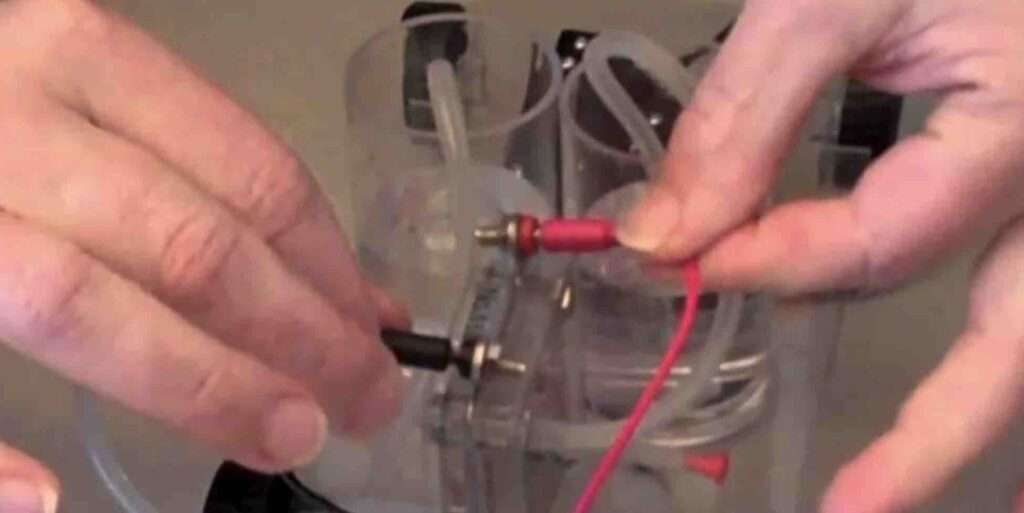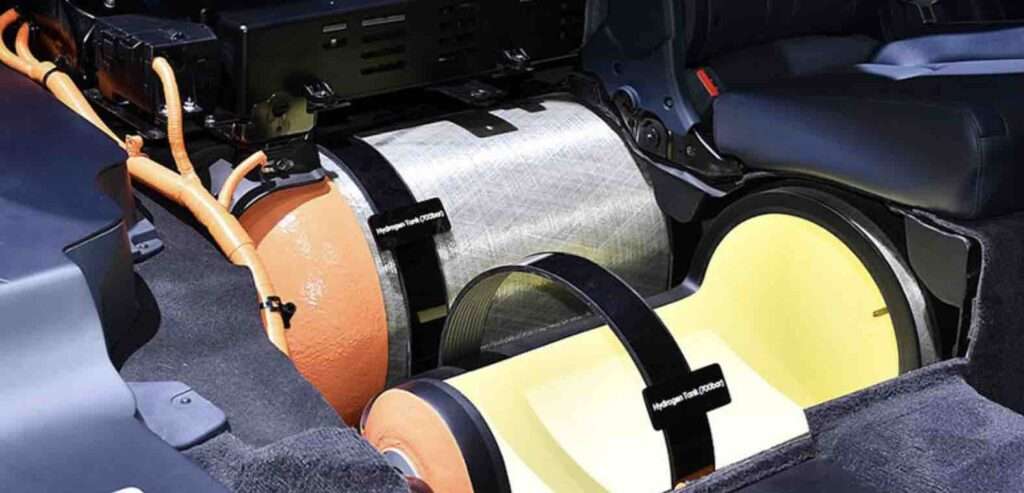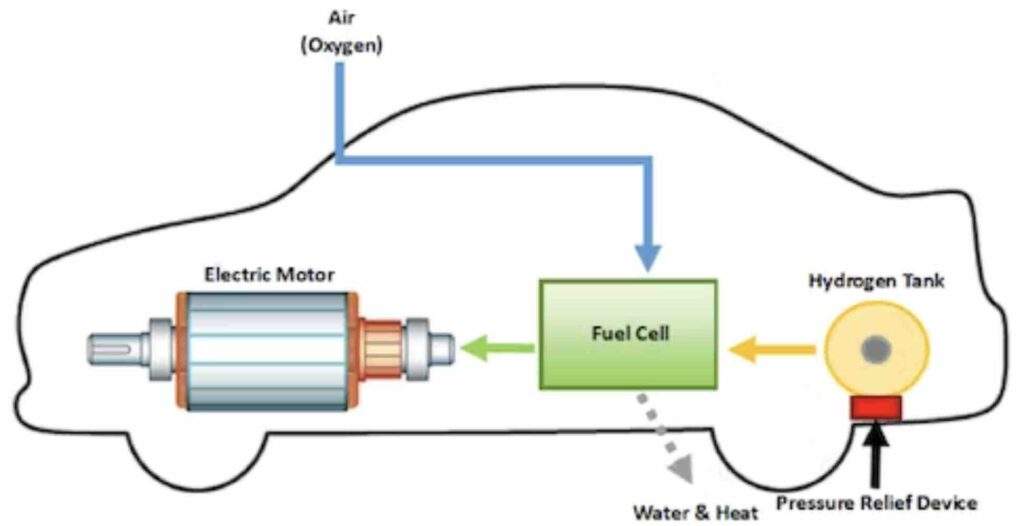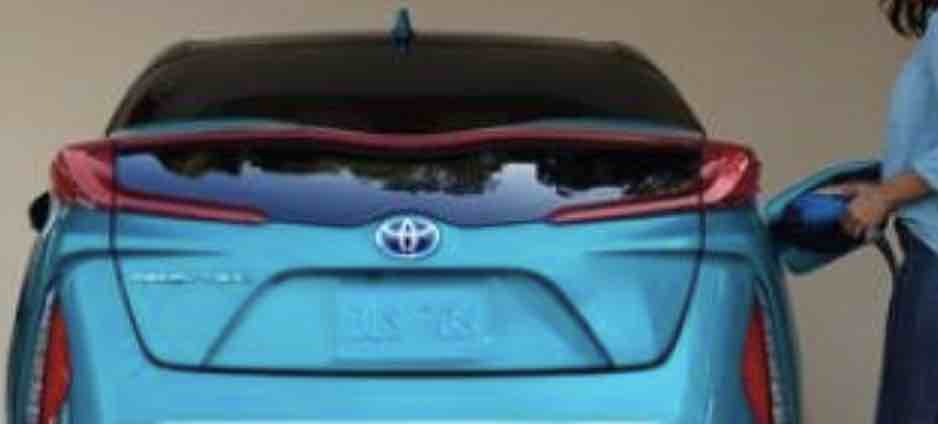Last updated on November 7th, 2022 at 11:48 am
How To Make Hydrogen Fuel Cell For Car? It is indispensable that hydrogen fuel cell creates electrical power quietly and efficiently, without pollution, unlike other sources of fossil fuels and other domestic sources. Although, the end product of the hydrogen fuel cell operation is only water and heat.
Notwithstanding, you could produce hydrogen fuel cells from domestic resources like nuclear power, biomass, renewable energy (wind and solar), and natural gas. Harnessing hydrogen fuel cells from these sources makes it possible to generate superior, environmentally friendly, and attractive fuel options for electricity generation and transportation applications.
So far, making hydrogen fuel cells for cars could be done using several methodologies and techniques common to an average individual, such as thermal process, biological process, solar-driven, and electrolysis (REDOX reaction). In as much as you would intend to make hydrogen fuel cells for cars, per se, there are issues with the hydrogen molecules being highly combustible and extremely tiny. For the earlier case, you would need damaging backups and exhausts as there is a high tendency to have inflammable gas in your vehicle garage. For the latter issue, you would need equipment with a high tight tolerance, not a domestic compressor.
Moreover, this guide will examine, explore and seek solutions to these specific issues and questions, like; can you make your own hydrogen fuel cell, how to make a hydrogen fuel cell for a car, how to build a hydrogen fuel cell car, is it possible to make a hydrogen fuel cell at home without platinum, how to make a hydrogen fuel cell at home without platinum, and more.
Let’s get started without much ado!
Related: hydrogen fuel cell cars how it works
Can You Make Your Hydrogen Fuel Cell?
Of course, yes, you can! Although, making hydrogen fuel cells is possible with simple material around your house or a few from a nearby electrical shop. Perchance, the most exciting part of this process is that you could do it in about 10 to 15 minutes or, at most, 20 minutes. Engaging in this seamless project with your friends or kids would acquaint them with a fascinating renewable energy concept. Check out the procedures below to help you make your hydrogen fuel cell.
How to make hydrogen fuel cell for car?
Hydrogen and oxygen are split from water to make a hydrogen fuel cell for a car using electrolysis as a chemical process. Perchance, these elements recombine when the power supply is cut, generating electrical energy.
Check out the procedures for making a hydrogen fuel cell for cars, as you would require the following materials:
- a popsicle stick
- a glass of water
- a 9-volt battery/battery clip
- transparent sticky tape
- a voltmeter
- about 1-foot platinum-coated wire
- Grab a 12-inch platinum wire and cut it into two equal parts. Twist each end over a nail to look like a spring/coil. You could leave about 1-inch at both ends as they serve as electrodes.
- Stick the free ends of the platinum electrodes using a popsicle stick. Remember to leave some free ends of the wire.
- Attach the leads with the crocodile clips on the free ends of the electrodes.
- Place the popsicle stick with the electrodes attached to the top of the glass of water. Ensure the electrodes submerged in the water are not in contact with each other.
- Fix the ends of the connecting lead to the multimeter, as it should read 0.001 or 0.000 volts. Then disconnect the leads wire to the multimeter.
- Connect the leads to the 9-volt battery as you leave it for about 2 or more seconds and observe bubbles on the electrodes.
- Disconnect the 9-volt battery as you fix back the multimeter, which would indicate a reading of 0.43 or 0.85 volts depending on the time the battery pack was left connected. However, you could use energy to run small electrical devices like LEDs. Similarly, if you tend to power a car, you have to generate a lot of power on a large scale.
Bravo, you have made your hydrogen fuel cell, and it is ready to use!
How To Build A Hydrogen Fuel Cell Car?
Before building a hydrogen fuel cell for cars, you must understand how the process functions. Perchance, you can make a hydrogen fuel cell through an electrolytic cell with simple materials.
In any case, keep reading to learn how!
Procedures
- Gather and arrange all required materials such as; a popsicle stick, clear tape, table salt (could be optional), a thin metal rod, a glass of water, 12inches or 30cm platinum wire, a 9-volt battery/battery clip, and a volt meter.
- You should cut two 6-inch or 15-cm strips of platinum-coated cable or platinum. However,
- these two springs would serve as the electrode to the fuel as you also make them have a coil shape.
- Using a cutter, snip both ends of the wires and attach them to the clip in half as you strip the insulation off the leads from a 9-volt battery.
- Hook up the stripped wire ends to the electrode coils. This electrode allows you to connect to the power source (battery via battery clip).
- You should tape the electrode to a popsicle stick. This stick should be longer than the mouth of the vessel holding the water as it rests on top. The electrodes should hang down as you tape them away from the stick to allow accessible water to submerge.
- To get an excellent reaction to the process, fill a glass with water or salt water (not distilled). The water in the glass serves as the electrolytes with some impurities, unlike the distilled water.
- Submerge the coil electrode in the water for most of its length, but not the one connected to the wire leading to the battery clip. Perchance, only the platinum wire should be submerged, and if necessary, tape it to stay tightly in the electrode.
- It would be best if you connected the wires from the electrodes to a voltmeter or even a LED bulb. The voltmeter would indicate if the fuel cell generates an electric current. It is necessary to fix the red and black wires to the voltmeter’s positive (+) and negative (-) terminals, respectively.
Activating The Simple Hydrogen Fuel Cell
- You can activate the fuel cell by following the steps below when you are through with the building.
- To send an initial electric current through the wire to the hydrogen in the water molecules, touch the 9-volt battery terminal to the battery clip for at least 2 seconds. The separation of oxygen and the formation of bubbles around the electrodes constitute the process of electrolysis.
- Remove the battery to enable the separated oxygen and hydrogen to recombine in the water, releasing energy used to split them as electricity. However, platinum serves as a catalyst speeding up the recombination of oxygen and hydrogen into water molecules.
- Read the output on the voltmeter. Its reading might be up to 2 volts but would steadily reduce due to the dissipation of the hydrogen bubbles, and then the hydrogen bubbles pop.
Is it Possible To Make A Hydrogen Fuel Cell At Home Without Platinum?
Indeed, it is not possible to make a hydrogen fuel cell at home without platinum metal. To this effect, no matter how expensive platinum is, it is the most available material. Additionally, scientists have continued looking for alternative materials for several years now. The progress has been in some transition metals like iron, cobalt, and tin, consisting of carbon matrix doped with nitrogen. So far, using iron-nitrogen-carbon catalysts or any other in making hydrogen fuel cells would be done industrially and not at home since it requires much more sophisticated equipment, which you do not have.
How To Make A Hydrogen Fuel Cell At Home Without Platinum?
Although, a readily alternative to platinum is yet to be available, especially for the home production of hydrogen fuel cells. It is easier to use catalysts like iron-nitrogen-carbon, but it requires an advanced technological setup and thousands of dollars to purchase. However, this is a typical hurdle for hydrogen fuel cells to become mainstream in transportation and other uses. In anticipation, there could be an alternative to platinum for the home generation of hydrogen fuel cells in a couple of years!
Conclusion
To summarize this article, fuel cells transform the chemical energy of a fuel, such as oxygen and hydrogen, into electrical power under a chemical reaction (REDOX).
Perchance you want to make a hydrogen fuel cell. It would help if you determined the power necessities for each specific device or application since the fuel cell is also functionally used to power anything like phones, vehicles, laptops, and many more. So, it would be wise to consider parameters like size, operating conditions, and materials.
Notwithstanding, I have detailed to you in the above work the procedures for making hydrogen fuel cells domestically and possibly making fuel cells with platinum metal. Do like and share this post with others!

Uchenna is a Radiographer and Auto parts mechanic who recently got his automotive diploma as an auto repair technician, and since then, has worked on fixing various car problems.
Working as just a radiographer, Uchenna didn’t just get all the fulfillment he desired, because he truly loved doing things tilted toward cars. As a kid, he would take apart his toy cars to see how they worked and would spend hours tinkering with his bike.
So, in 2017 he made the tough decision to become an auto mechanic. He threw himself into his studies and now loves every aspect of what he does.
He gets to work with his hands, solving problems and bringing cars back to life, and sharing his knowledge and easy quick-fix guide online are all part of what makes him feel fulfilled.





